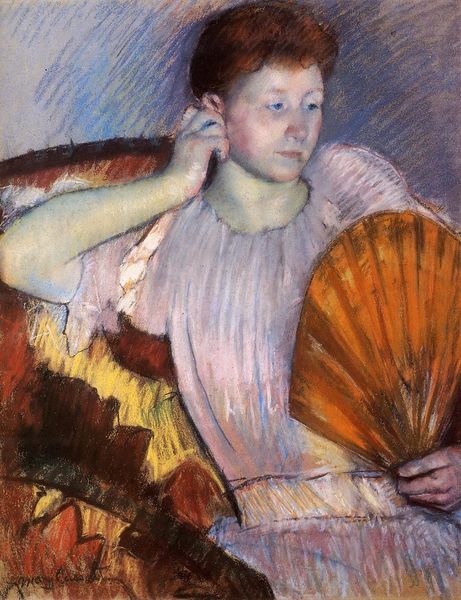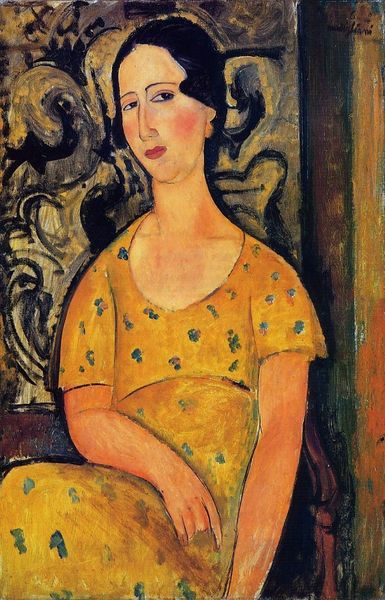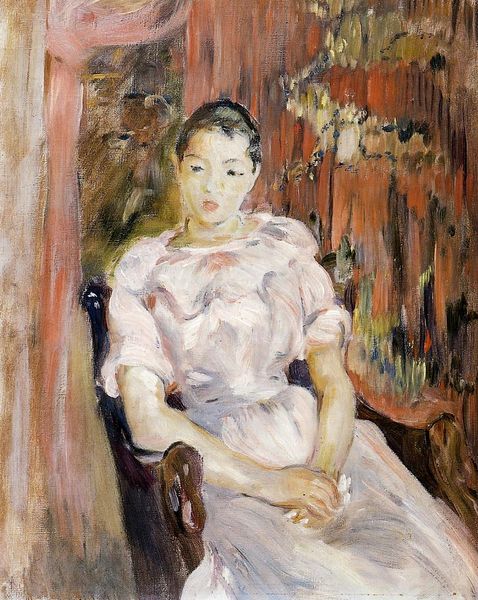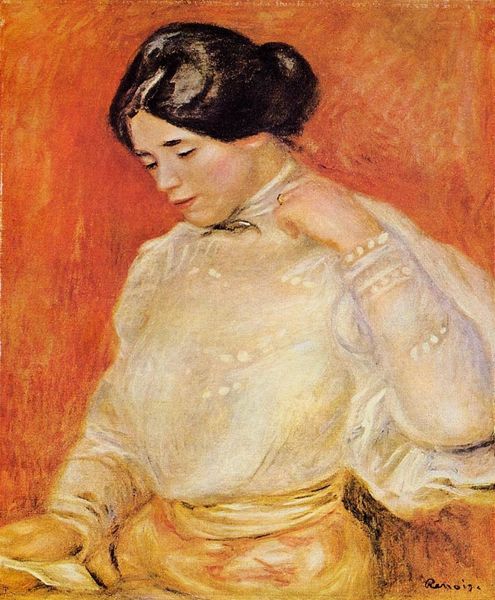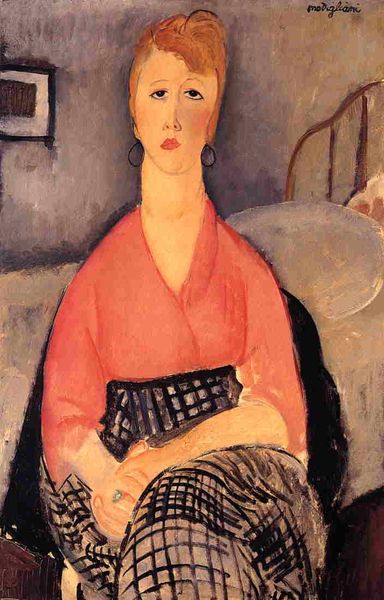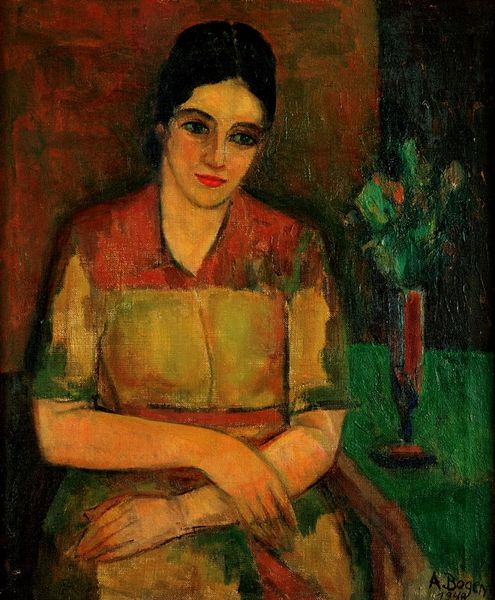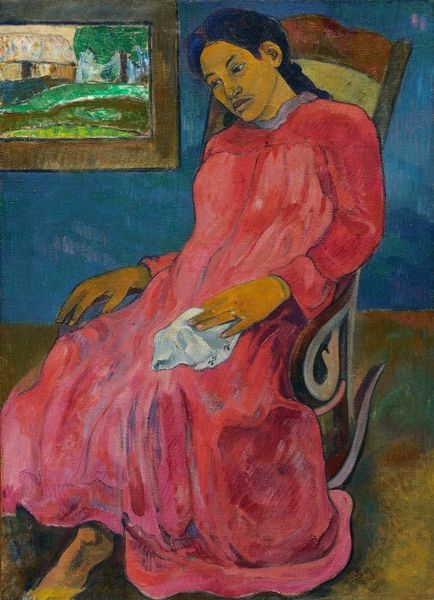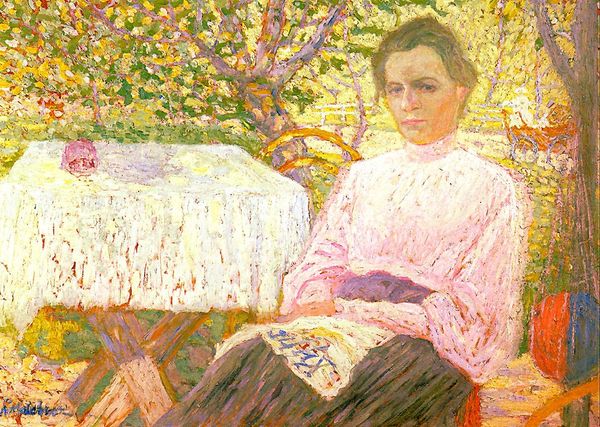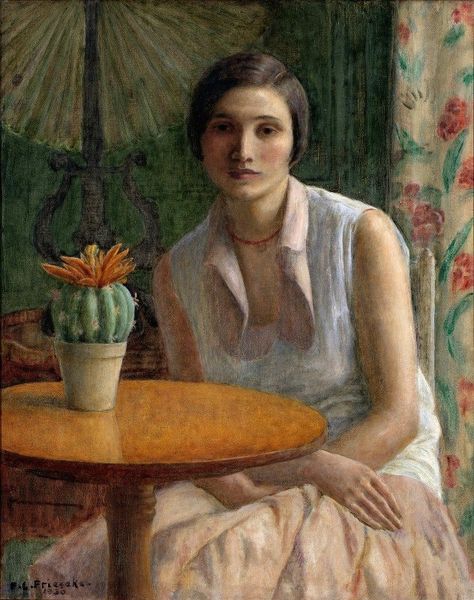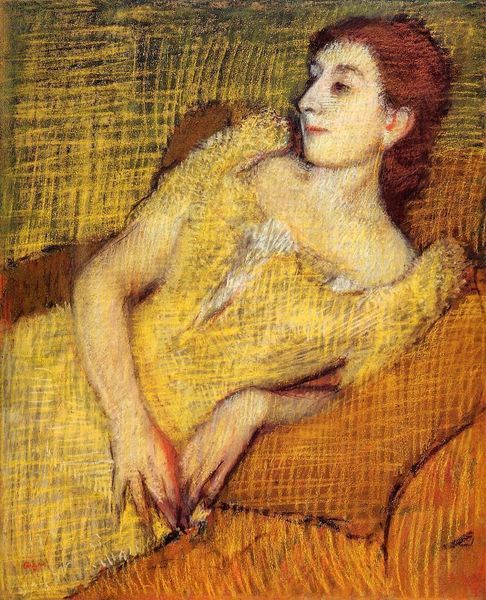
Dimensions: 81 x 81 cm
Copyright: Public domain
Curator: Upon first glance, I find myself drawn into the quiet introspection emanating from this canvas. It feels serene, perhaps even a bit melancholic. Editor: That's a fascinating read, considering it is Frederick Carl Frieseke's "Closed Blinds," painted in 1924, executed in oil. It’s a quintessential example of American Impressionism. The historical period, the Roaring Twenties, witnessed an intriguing tension between celebration and quiet anxiety about modernity's trajectory. Curator: Ah, that tension resonates profoundly! Notice how the closed blinds symbolize an inward focus, even withdrawal. The stripes of the woman’s dress could be read as bars, hinting at constraint within domesticity. There’s something deeply psychological in play here. The closed blinds simultaneously conceal and reveal. Light filters through, yet it’s diffused. A visual metaphor for memory perhaps, or a half-told story? Editor: Intriguing! Frieseke lived in France for a considerable time. His depictions of women often sparked controversy for blurring the lines between intimacy and objectification, influenced partly by his social circle. While stylistically impressionistic, with those characteristic brushstrokes, one could examine whether his subject adopts or challenges gender conventions in painting. Is she active or passive? How does Frieseke engage her subjectivity, within or against societal expectations? Curator: That's a crucial question. Consider how Frieseke positions the pearl necklace, looped multiple times around her neck. A symbol of status, yes, but also of confinement? Her gaze, although direct, doesn’t fully meet ours, suggesting perhaps a withholding of self. She seems burdened by interior thoughts. Also, in terms of symbols, what does fruit bring to mind in this domestic scene? Is it a cornucopia of potential, the bounty of nature, or yet another form of silent objectification? Editor: Absolutely, and that contrast between intimacy and distance shaped much of the critical reception during the interwar years, the art market's promotion of American artists abroad and so forth. Considering those intricate historical currents shapes our understanding. We now view “Closed Blinds" less as a simple domestic scene and more as a potent site for cultural critique. Curator: A perspective I fully embrace. The dialogue continues. What do you see, really? I am walking away with the power of symbolic representation here, I have some new questions to contemplate in terms of memory, silence, and intimate, interior struggles that resonate. Editor: Agreed. It encourages critical engagement, demanding we look past pretty surfaces into the social and aesthetic currents that shaped both artist and audience, which continues to offer interesting observations to our contemporary perspectives.
Comments
No comments
Be the first to comment and join the conversation on the ultimate creative platform.
